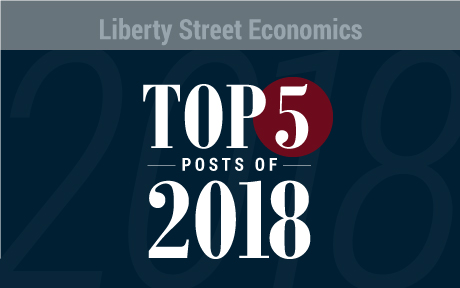Many Places Still Have Not Recovered from the Pandemic Recession

More than four years have passed since the onset of the pandemic, which resulted in one of the sharpest and deepest economic downturns in U.S. history. While the nation as a whole has recovered the jobs that were lost during the pandemic recession, many places have not. Indeed, job shortfalls remain in more than a quarter of the country’s metro areas, including many in the New York-Northern New Jersey region. In fact, while employment is well above pre-pandemic levels in Northern New Jersey, jobs have only recently recovered in and around New York City, and most of upstate New York—like much of the Rust Belt—still has not fully recovered and has some of the largest job shortfalls in the country.
How Did New York City’s Economy Weather the Pandemic?

When COVID-19 first struck the U.S. in early 2020, New York City was the epicenter of the pandemic. By early April, there was an unthinkable scale of suffering, with massive hospitalizations and roughly 800 fatalities per day, accounting for nearly half of the nationwide total. The rapid spread was facilitated by the city’s extraordinarily high population density and widespread use of mass transit. What followed was a quick and massive shutdown of restaurants, retail stores, personal services, offices, and more. And the shutdowns, of course, led to widespread job losses. Between February and May, one out of five jobs in the city vanished; in the restaurant industry, 70 percent of jobs were lost. Although the pandemic didn’t go away, the city’s economy has recovered steadily, aside from a brief but sharp setback in late 2020. By early 2023, New York had finally reversed just about all of the total job loss. In this post, we look at the contours of the city’s recovery as a possible guide to where we go from here.
Is Your Apartment Breaking because Your Landlord Is Broke?

Thirty-one percent of housing units in the United States are rental units, and rental housing is unique because unlike in the case of homeownership, renters rely on the property owner for maintenance spending. From the property owner’s perspective, building maintenance is an important investment necessary to keep the asset in good condition. However, like all investments, it is only possible to maintain a building with sufficient financial resources. In a recent staff report, I examine the relationship between a building’s financing constraints and its maintenance. I find that financially constrained buildings, colloquially “broke,” tend to be less well maintained.
Cryptocurrencies, Tariffs, “Too Big to Fail,” and Other Top LSE Posts of 2018

“Cryptocurrency” hit the cultural mainstream in 2018. In March, Merriam-Webster added “cryptocurrency” to the dictionary, and in what was perhaps a greater litmus test of pop culture recognition, “bitcoin” was added to the official Scrabble dictionary in September. With such a surge in interest, it’s not too surprising that the most viewed post on Liberty Street Economics this past year focused on an issue surrounding how digital currencies operate that is not often put in the spotlight—trust. Similarly, as the subject of tariffs has become a more frequent topic of discussion in the news, readers have sought additional info, which fueled interest in another of our most viewed posts of the year. As 2019 approaches, we offer a chance to revisit these posts and the rest of our top five of 2018.
Why New York City Subway Delays Don’t Affect All Riders Equally

The state of the New York City subway system has worsened considerably over the past few years. As a consequence of rising ridership and decaying infrastructure, the network is plagued by delays and frequently fails to deliver New Yorkers to their destinations on time. While these delays are a headache for anyone who depends on the subway to get around, they do not affect all riders in the same way. In this post, we explain why subway delays disproportionately affect low-income New Yorkers. We show that wealthier commuters who rely on the subway are less likely to experience extensive issues on their commutes.
Just Released: Mapping the Differences in School Spending in New York City

Rajashri Chakrabarti and Michael Stewart This morning, the Federal Reserve Bank of New York released a set of interactive visuals that present data on school spending and its various components—such as instructional spending, instructional support, leadership support, and building services spending—across all thirty-two community school districts (CSD) in New York City and map their progression […]
Will Silicon Alley Be the Next Silicon Valley?
Jason Bram and Matthew Ploenzke Update: We broadened our definition of Silicon Valley and present more complete data on that region’s trends in the comments section of this post. In the body of the piece, we also corrected the NAICS code for Scientific R&D Services. For at least the past few decades, New York City’s […]
New York City’s Not‑So‑Outer Boroughs
Ever since the first census of the U.S. population was taken, back in 1790, New York City has been the nation’s largest city, and for most of this time by a factor of more than two.
Just Released: February Report Points to Moderate Regional Economic Growth
The February Indexes of Coincident Economic Indicators (CEIs) for New York State, New York City, and New Jersey released today show activity expanding at a moderate pace across the region.
Good News or Bad on New York City Jobs?
Unlike much of the nation, New York City has seen a robust rebound in employment since the recession.










 RSS Feed
RSS Feed Follow Liberty Street Economics
Follow Liberty Street Economics